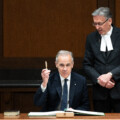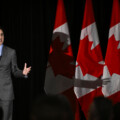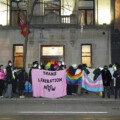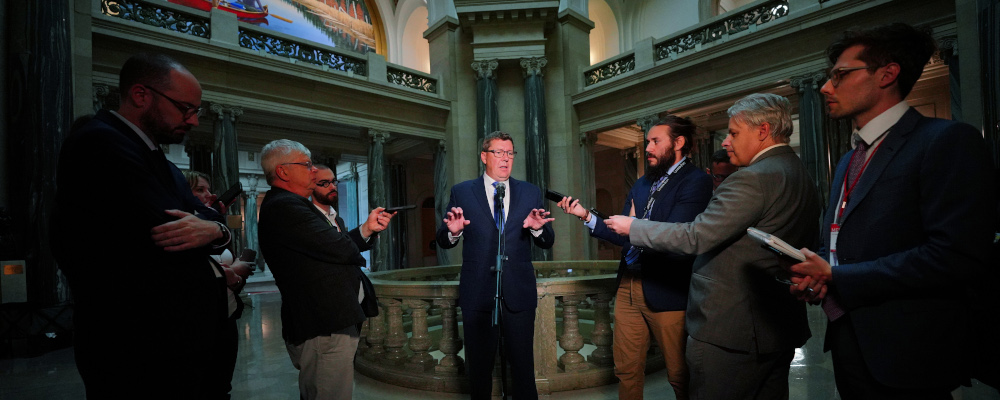Late last year, Gib van Ert, president of the Canadian Council on International Law and an authority on the application of international law in Canadian courts, and Prof. Amir Attaran of the Faculty of Law, University of Ottawa published a proposal in the Hill Times for a new law that would impose constraints on the use of section 33 of the Charter—the so-called “notwithstanding clause”—based on Canada’s international obligations. Their proposed “Notwithstanding Act” would oblige the federal cabinet to use its power to disallow a federal or provincial law (a power not used since World War II) every time a legislature uses section 33 to pass a law that either the federal cabinet or the Supreme Court of Canada concludes is inconsistent with an international treaty to which Canada is a party. The proposal recently attracted new attention in the wake of Saskatchewan’s decision to invoke section 33 to pass legislation saying that students under 16 must have parental consent to change their names or pronouns at school.
The Hub has invited Mr. van Ert and Howard Anglin, a regular contributor, to debate the merits of the proposed Notwithstanding Act. This debate will take place in two parts. Today, in Part 1, Mr van Ert describes and defends the proposed Act and Mr Anglin responds with an initial critique. Tomorrow, in Part 2, Mr van Ert and Mr Anglin will each offer two brief responses to the other’s arguments.
Introduction by Gib van Ert
On a plain reading of its terms, the notwithstanding clause (section 33 of the Constitution Act, 1982) would allow a provincial legislature to suspend, for five years less a day, the right of Jews (or Muslims or Christians or Sikhs, etc.) to practice their faiths—and to renew that suspension every five years indefinitely.
Also on a plain reading of section 33, a legislature could suspend for five years less a day the right of free speech. Or the right to liberty. Or the right to equality. Or even the right to life. And maintain those suspensions indefinitely.
There is a view, current in some political and legal circles, that the capacity of section 33 to shelter the most outrageous human rights violations from all judicial oversight is not a bug but a feature. The notwithstanding clause says what it means and means what it says. It is an express provision of our Constitution—indeed, of our Charter—and there is no power reserved to the courts to impose any limits on it.
There may, however, be a power in Parliament to impose limits on it. In an article Prof. Amir Attaran and I published in the Hill Times last December, we proposed that Parliament enact a law requiring the federal cabinet to review all exercises of section 33—whether provincial or federal—for consistency with Canada’s international legal obligations. Where an invocation of the notwithstanding clause would put Canada in breach of those obligations (as determined, where needed, by reference to the Supreme Court of Canada), our proposed law would require cabinet to disallow that enactment under sections 56 and 90 of the Constitution Act, 1867.
I suggest there are at least three merits to this idea.
First, a Notwithstanding Act would impose some level of protection against the worst potential excesses of the notwithstanding clause. For instance, all forms of overtly discriminatory laws—expressly targeting vulnerable religious, racial, or ethnic minorities—would be captured. In the aftermath of the Second World War, the victorious powers denied such discrimination the imprimatur of law in instruments such as the UN Charter, the Universal Declaration of Human Rights, and the International Covenant on Civil and Political Rights.
Second, a Notwithstanding Act would measure exercises of section 33 against an objective external standard, namely Canada’s obligations under international human rights law. Successive federal governments, Conservative and Liberal, have freely contracted these obligations. They are not the products of judicial creativity, as might be said of the unwritten constitutional principles described by the Supreme Court of Canada in the Secession Reference and other cases.
Third, scrutinizing exercises of the notwithstanding clause for consistency with our international obligations is in keeping with the constitution’s recognition that the conduct of foreign relations (“External Affairs” in historic Canadian parlance, “Global Affairs” in the idiom of the current government) rests with the federal Crown. Provincial, or even federal, laws that breach Canada’s international obligations are incursions into Canadian foreign policy which—assuming we strive for an intelligible and consistent foreign policy—ought to be discouraged.
Many objections can be made to this idea, and indeed Howard Anglin will make some of them (no doubt forcefully) in his response to this article. I will address only one now. The federal government’s disallowance power has not been exercised in decades. Some commentators have gone so far as to question whether it remains part of our law. Of course it does. It is written into the 1867 Constitution, just as the notwithstanding clause is written into the 1982 Constitution. Both provisions are, in the words of section 52 of the Constitution Act, 1982, part of “the supreme law of Canada”.
Response by Howard Anglin
I am pleased to have an opportunity to respond to Gib van Ert’s creative scheme to neuter section 33 of the Charter of Rights and Freedoms. Before I get to (some of) my (many) disagreements, let me acknowledge a significant point of agreement: Mr. van Ert’s proposal is viable. I agree that the federal government’s disallowance power—the cabinet’s ability to nullify any provincial law—remains available, despite not being used for 80 years.
My primary concern is not, therefore, technical; it’s far more serious. Not to put too fine a point on it, but the revival of the disallowance power—not just as a potential political remedy but a legal requirement—would provoke a constitutional crisis. It’s hard to imagine a single act that could do more to inflame smouldering separatist sentiment in Quebec or spark it in Alberta and Saskatchewan.
One can, of course, believe that some laws are so inhumane, so evil, that disallowing them would justify burning down our constitutional order, but viewed objectively among our peer countries, Canada is not an obvious moral outlaw. In fact, I can’t think of a single current or contemplated law, including those I dislike, that doesn’t have an analogue among one or more of our peer countries who are also signatories to international human rights treaties. I would, therefore, respectfully suggest that committing constitutional arson would be a rather rash and foolish overreaction at this time.

My second objection is that the proposed Act would be unconstitutional in the profound and venerable sense that it’s inconsistent with established and generally accepted political practice (I explain this sense here). Namely, it violates two foundational constitutional settlements: it undermines section 33 of the Charter, which is conditio sine qua non of the 1982 constitutional settlement; and it violates the original terms of confederation, which allocated certain legal powers to the federal government and others to the provinces.
On this second point, the Supreme Court of Canada has affirmed that just because the federal government has signed a treaty that touches on an area of policy assigned to the provinces doesn’t give them the constitutional authority to meddle with provincial policy. So far so good. But Mr. van Ert knows this, which is why he proposes instead to deploy the nuclear option of disallowance to circumvent the strictures of federalism. The Act attempts to do indirectly what cannot be done directly, and it would blow a hole in the division of powers as large as the folly of the federal cabinet.
My other objections will have to await the further back and forth, but I will quickly respond to one more of Mr. van Ert’s points and raise another one.
First, he says his Act “would measure exercises of s 33 against an objective external standard, namely Canada’s obligations under international human rights law.” This is wishful thinking. International human rights instruments are written at such a high level of hortatory abstraction that their application to specific Canadian laws would be inherently contestable and thus immediately controversial. Internationally, they have proved susceptible to the same textually untethered interpretation as the Charter, so the proposed involvement of the Supreme Court would unwisely drag the judiciary into intensely politicised federal-provincial disagreements.
Finally, the Act assumes that an advisory opinion on international law should trump democratically-enacted domestic law. This would incur a democratic deficit so large it would hazard political bankruptcy. Requiring the federal cabinet to disallow democratically enacted provincial laws based on the advisory opinion of five ex-lawyers reading the tea leaves of international law would be the end of 200 years of responsible government. It would remove government farther from the people and exacerbate popular disillusionment with politics, courts, and the Constitution.
Recommended for You

The Notebook by Theo Argitis: Carney’s One Big Beautiful Tax Cut, and fresh budget lessons from the U.K.

Ginny Roth: How vacant liberal nationalism left Canada worse off than George Grant even imagined

Peter Menzies: Justin Trudeau’s legislative legacy is still haunting the Liberals

‘Our role is to ask uncomfortable questions’: The Full Press on why transgender issues are the third rail of Canadian journalism



